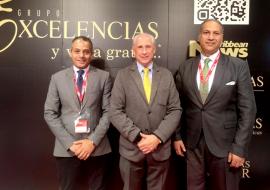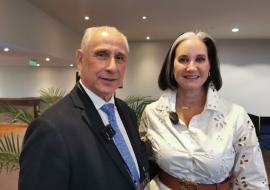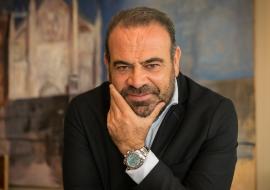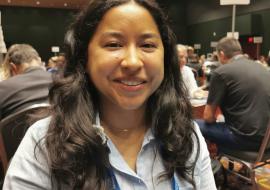Interview with Carlos Vogeler
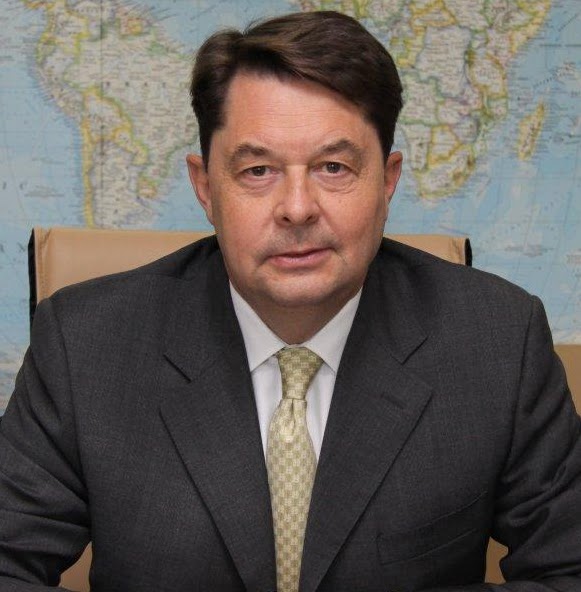
Dear Mr. Vogeler, after years dedicated to international tourism management in professional fields such as your important time at the World Tourism Organisation, what is your general opinion of the policies developed by the main tourist destinations?
Destinations have evolved significantly in their tourism policies in recent years.
They are now more aware of the need to introduce sustainable development policies, both environmentally, economically and socially. They are also much more aware of the need to involve the local community in tourism development, so that the local community does not feel that tourism is something alien to them, that it is a nuisance and does not bring them anything positive. They also make more use of technological advances in the design and positioning of their products in different markets. Big data allows them to be much more focused and efficient in the use of their resources, as well as augmented reality and virtual reality to strengthen the experience of visitors in the destination and to carry out a more effective promotion in source markets.
What role do you think the World Tourism Organisation has played in cushioning the impact of the pandemic on tourism?
I think that the UNWTO has been largely absent in the period of the pandemic. Its activities to combat and mitigate the effects of the pandemic on tourism, if they have been carried out at all, have gone unnoticed. In my view, in its capacity as a specialised agency of the United Nations, it could have played a much more prominent role in coordinating with other agencies in the system, mainly the WHO, establishing alliances with the business sector to analyse the effects of the situation and be able to offer tourist destinations measures to help guarantee the health and hygiene of the destination and consequently transmit more peace of mind and confidence to visitors. It would also have been desirable to unify criteria for travel requirements, such as vaccination certificates, PCRs and others. Each destination has established different criteria, with the confusion and insecurity that this entails.
In the pandemic, there has been no body to take on the coordinating role to facilitate travel as soon as possible. Private bodies such as IATA and WTTC have been much more active.
Having been in contact with important players in the tourism industry and to our question about the importance of international tourism institutions, do you consider institutions such as the UNWTO-OMT or the WTTC, which are two of the most important institutions in the world, to be of real relevance in the development of tourism, or are they simply spaces for developing relationships and generating meetings?
Obviously the two organisations, although they are the most important, have a totally different nature. The UNWTO-OMT, as the United Nations specialised agency for tourism, has a great responsibility as a promoter of the sector as a whole at the international level. Working primarily with governments to make tourism more relevant in state policies.
This is obviously not irrelevant, but unfortunately the UNWTO-OMT does not seem to have the capacity to exercise the level of leadership that one would expect from such an organisation and this makes its role less and less relevant.
The WTTC, we must not forget, is a business organisation that brings together the main companies in the travel and tourism industry and, as such, its main mission is to defend the interests of its members. In fact, it was created as a club of large companies to lobby governments in favour of tourism. With these objectives in mind, it seems that the WTTC has been able to make its presence felt in a more relevant way.
At the moment, what do you think are the key points in the relationship between public institutions and the tourism industry?
Collaboration between institutions and industry has always been necessary in the tourism sector, but now it is absolutely essential. The pandemic has taught us many things, but one of the most important has been precisely the need to strengthen public-private partnerships, both in the regulatory field and in the development of products and their promotion and distribution.
Institutions and the business sector must join forces in the design of strategic tourism plans that take into account changes in society, growing competition, the opportunities offered by technology to be more efficient in management and, above all, the new trends in demand that are taking place.
Do you consider that the pandemic has introduced relevant changes in the behaviour of tourists and travellers, or has everything remained relatively unchanged?
My opinion is that the pandemic marks a before and after in the behaviour of tourists. First of all, we are seeing a further stimulation of travel demand. The periods of confinement have contributed to an increase in the desire to travel, which had to be contained during this difficult time and is now appearing more strongly.
There is also an increased awareness of health and hygiene issues. Those destinations that have a solid and well-structured health system, together with adequate health safety and hygiene protocols, will have a competitive advantage, given the sensitivity of tourists to these issues.
Another aspect has to do with the proximity of the destination to the source market. The pandemic has also helped to boost domestic and local tourism, which offers greater security because it is in a familiar environment.
It is also curious that the pandemic has brought to the surface our awareness as tourists of our impact, whether environmental or economic, on the destinations visited, and consequently we are seeing the growth of a more conscious and responsible tourism in terms of sustainability.
What do you see as the main trends in international tourism?
There are two key elements in tourism demand trends: digitalisation and sustainability.
In the digital era in which we find ourselves, we are obviously facing a much more digitalised tourist. They are more self-sufficient, more knowledgeable and, consequently, much more demanding. They are looking for more personalised products adapted to their desires and have taken control of the market, which no longer belongs to the suppliers who used to impose their rigid products. Today's tourists demand more flexible and dynamic products. In fact, the dynamic package, i.e. one that the buyer can tailor-make, is taking the lead.
On the other hand, sustainability also plays a role in reinforcing a trend that we have been observing for some time. We can no longer speak of sustainable tourism development as if there were another option, i.e. non-sustainable development. The episodes of "overtourism" experienced in many tourist destinations and the rejection, in too many cases, of the local community, make it absolutely necessary to ensure the environmental, economic and socio-cultural sustainability of tourist destinations.
Given your extensive knowledge of the Arab world, do you consider that the tourism policies being developed in these countries are aligned with other international policies, mainly those of Europe and North America?
For some time now, Middle Eastern countries have been showing an interest in diversifying their economies, which are obviously heavily dependent on oil and gas exports.
In this economic diversification strategy, the services sector and especially tourism play an important role. In this regard, we have seen for some time now the development of the United Arab Emirates and more specifically Dubai and later Abu Dhabi becoming attractive tourist destinations in international demand. This is also the case of Qatar, which has made a strong commitment to combining sport with tourism, and the Sultanate of Oman, a country that offers a wide range of options: nature, culture, sea and beaches, desert, mountains, wadis, and which is making a strong commitment to uncrowded tourism. Bahrain and Kuwait are also developing a type of tourism with a focus on culture. More recently, Saudi Arabia is introducing major changes to become a first class tourist destination with the objective of reaching 100 million tourists by 2030 according to its strategic plan and with large investments in new macro-projects such as Neon, Red Sea and Qiddiya, among others.
There is no doubt that the region has a lot to offer, both to domestic and intra-regional tourism from the countries that make up the GCC (Gulf Cooperation Council) area and, of course, to international tourism from outside the region.
Its policies in terms of tourism development strategy show a clear political will for growth in this economic sector, while at the same time being aware of the need for orderly and sustainable growth and avoiding making some of the mistakes of mature destinations.
In this sense, Spanish companies have a lot to contribute, as they are highly valued, both in the area of technology, operations and management, as well as in the area of consultancy. In fact, THR, a Spanish company with a long tradition and experience in tourism consultancy, carried out the tourism strategy for Oman and maintained a team, which I had the privilege of leading, in the Ministry of Tourism for almost two years for its implementation. THR is also currently involved in tourism projects in the region (mainly in Saudi Arabia and Qatar).
Let's talk a bit about Asian tourism and specifically about tourism from China as a major outbound market, how do you think this tourism will be impacted when the borders are opened to the outside world?
China was already experiencing a huge growth in tourism demand in the pre-Pandemic period, which was radically affected by confinement and travel restrictions.
When the borders are opened we will see that demand again, perhaps even more strongly, first for domestic and Asian tourism and, as confidence grows, for other international destinations.
It is important that tourist destinations prepare themselves adequately to receive this type of tourism, which has very specific and different characteristics from other source markets.
There is a lot of talk about the digitalisation of the tourism industry and every time we talk to important tourism stakeholders, each one defines it in a different way, in many cases totally different. How would you define the digitalisation of the tourism industry?
Digitalisation in tourism has numerous applications. For example, in the field of market research through the use of "big data", so that more defined and focused products can be designed according to the type of consumer, which is increasingly diverse. Likewise, in promotion and marketing, so that it is possible to segment more accurately and effectively, but also with the use of virtual reality and augmented reality to present destinations in a more attractive way to potential buyers.
The experience of tourists in their total travel cycle, known as the "customer journey", can be greatly enriched with the use of digitalisation, not only to facilitate travel: security controls, passports, boarding procedures in means of transport, etc., but also in the actual experience of visiting and using the destination's services: museums, monuments, archaeological sites that can be presented in a much more attractive way.
Tourists' activities at the destination are very varied, with gastronomic components, fun and entertainment, cultural visits, interaction with the local community, relaxation, etc. All these experiences can be stimulated with digitalisation applied to create memorable experiences that will remain in the memory.
As university professor, do you think that large academic centres prepare future professionals with the dynamic reality of tourism in mind?
There has always been a gap between the academic sector and the professional sector. This gap has led to a distancing that has ended up damaging the training of future professionals.
I have experienced this gap as I have combined my professional activity with teaching as a university lecturer.
Fortunately, there is a growing awareness of the need to bring the rigour and research and teaching capacity of the academic world closer to the practice of the professional sector, which is highly dynamic and constantly changing. One without the other makes training incomplete and therefore insufficient, so that the two worlds are doomed to understand each other.
In recent years, progress has been made in this regard and both tourism degrees and postgraduate and double degrees incorporate more and more practical elements, including agreements between companies and universities so that students can complete their training with practical experience in the field, which not only contributes to completing their training, but in many cases constitutes a valuable source of recruitment of future professionals for companies.
However, we must continue to make progress in this rapprochement and collaboration in order to achieve excellence in training.








